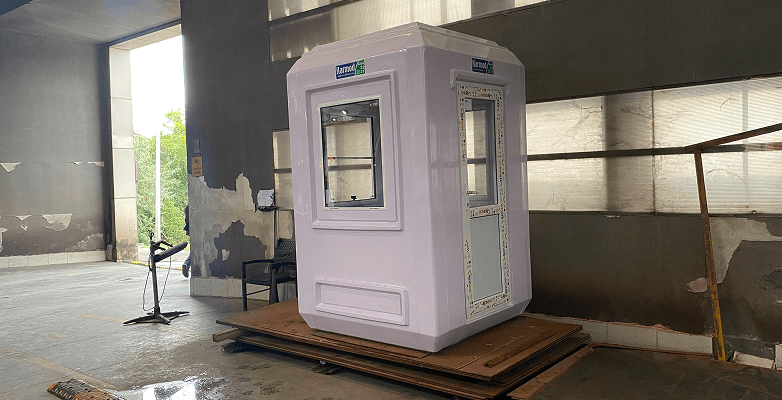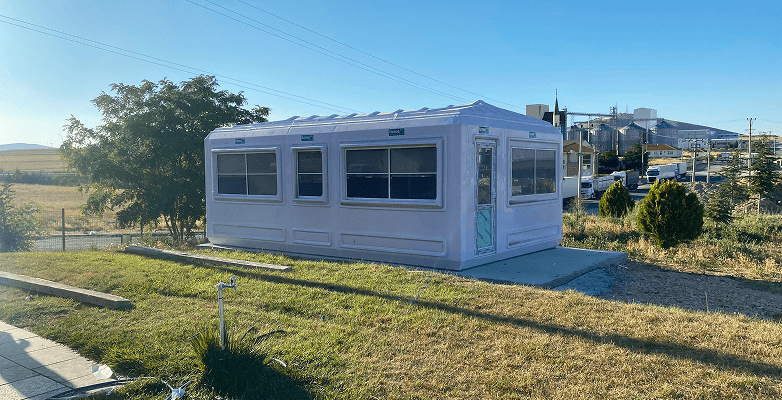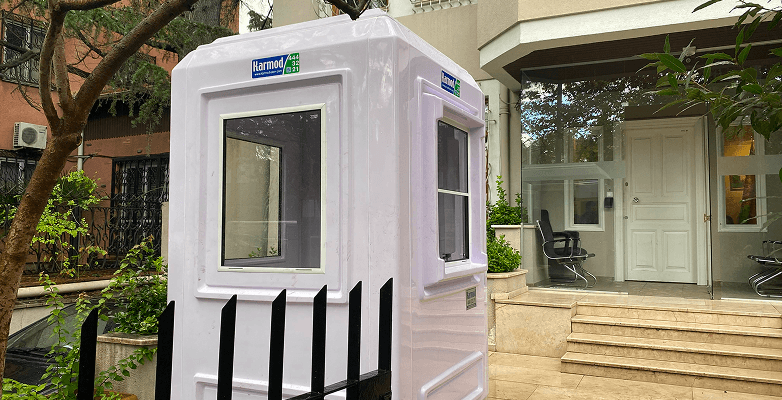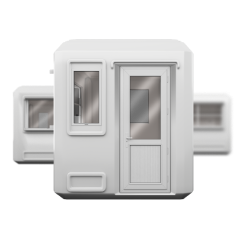Workplaces in the United States have never been more complex. Distributed teams, hybrid work, 24/7 logistics, and increasingly connected buildings mean there are more entry points—and more opportunities for risk—than ever before. Security, therefore, is not just a compliance checkbox; it is a strategic capability that protects people, preserves assets, and sustains business continuity. Done right, it also supports productivity by removing friction from daily operations and giving employees the confidence to do their best work.
Security is not a department; it’s an operating system for the entire workplace. This mindset shift helps leaders design integrated programs where policies, people, processes, places, and platforms reinforce one another, rather than operating as isolated controls.
The Modern Threat Landscape
Workplace risks fall into four broad categories:
- External threats: theft, vandalism, violent intrusion, parking-lot incidents, and supply chain tampering.
- Insider risks: policy violations, tailgating, stolen credentials, and confidential data mishandling.
- Cyber–physical convergence: badge systems tied to networks, IoT sensors, cameras, and visitor software—great for efficiency, but a bigger attack surface.
- Operational hazards: crowd surges at shift changes, contractor onboarding gaps, emergency evacuations, and severe-weather disruptions.
A mature program acknowledges all four, prioritizing controls that reduce both likelihood and impact while staying practical for day-to-day use.
Why Security Improves Productivity (Not Just Safety)
Well-designed security increases speed and predictability. Clear wayfinding, reliable access control, and a visible checkpoint reduce confusion and disputes at the front door. A single pane of glass for cameras, alarms, and visitor logs helps supervisors resolve issues quickly. Most importantly, employees feel safe—psychological safety is a proven driver of performance, retention, and brand advocacy.
The cheapest security is almost always the one you put in before something happens. Proactive measures—like zoning, credential hygiene, and tested response plans—cost a fraction of the financial, legal, and reputational damages caused by an incident.

Layered Security: Policy, People, Place, Process, Platform
- Policy: Define who can go where, when, and why. Keep it short, enforceable, and aligned with HR.
- People: Train reception, supervisors, and guards on de-escalation, emergency communications, and incident reporting.
- Place (the built environment): Design entrances, lighting, and sightlines to deter tailgating and loitering.
- Process: Standardize check-in, contractor vetting, deliveries, and shift handovers.
- Platform (technology): Unify access control, cameras (VMS), visitor software, and alarms—ideally with role-based dashboards.
When these layers align, the workplace runs smoothly: faster throughput at gates, fewer false alarms, and better audit trails.
Access Control That Works in the Real World
Effective access control starts with the basics: strong ID issuance, role-based permissions, and clean revocation when roles change. Complement badges with PIN, mobile credential, or MFA in sensitive zones. Use anti-passback and tailgating detection in high-traffic entries. For vehicle gates, license plate recognition (LPR) linked to pre-approved lists speeds entry while maintaining traceability.
Physical checkpoints remain the linchpin. A well-placed guard booth provides sightlines, shelter, and the power, data, and counter space needed for scanners, radios, and monitors. For facilities that need a hardened, long-life solution with pre-wired electrics and ergonomic interiors, consider modular structures such as Safety Cabin, which are engineered to accept access hardware cleanly and safely.
Reception, Lobbies, and Perimeter Kiosks
Not every workplace needs a full security office. Many require compact, rapid-deploy kiosks that manage visitor flows at the lot entrance, drop-off zone, or secondary gate. Lightweight, mobile form factors like Mobo Cabin support seasonal or event-based traffic, temporary construction phases, and pop-up operations without sacrificing power, lighting, or weather protection.
Where customer experience matters (corporate campuses, hospitals, schools), dedicating a post near valet or curbside traffic can separate service and security conversations—each done faster and with less confusion. For those front-of-house scenarios, streamlined footprints such as Valet Shed help keep attendants visible and covered while preserving clear pedestrian paths.
Environmental Design: Seeing More, Intervening Earlier
Crime Prevention Through Environmental Design (CPTED) teaches us that layout and line-of-sight are as important as locks. Place checkpoints diagonally to the main flow so staff can observe both approach lanes. Use panoramic glazing with narrow mullions to minimize blind spots. Add LED apron lighting at entries and crosswalks; pair it with anti-glare interior task lighting so screen glare doesn’t obscure what’s happening outside. Post signage that sets expectations: “Have ID Ready,” “Authorized Vehicles Only,” and clear visitor routing.
Emergency Readiness: Plans That Actually Work
A binder on a shelf isn’t a plan. Build concise Standard Operating Procedures (SOPs) for fire, severe weather, medical incidents, and workplace violence. Tie PA/intercom, SMS alerts, and strobe alarms into the same playbook so the first message is fast and unambiguous. Designate muster points and secondary exits. Run short, realistic drills—five minutes once a month outperforms a long annual exercise nobody remembers.
For facilities with hazardous work or public interaction, equip the checkpoint with a trauma kit, AED, and spill supplies, and ensure guards are trained to use them. Store copies of site maps, utility shutoffs, and contact trees where responders can reach them instantly.
Insider Risk and Culture
Most workplace incidents stem from confusion, convenience, or culture—not Hollywood-style adversaries. Make it easy to follow the rules: short policies, intuitive routes, and self-service visitor pre-registration. Recognize and reward employees who report tailgating or badge misuse. Set a respectful tone at the door; professional, courteous interactions reduce escalation and keep queues moving.
Metrics and ROI
Measure what you want to improve. A simple dashboard might include:
- Throughput: average seconds per vehicle/person at entry
- Incident rate: near misses, unauthorized access attempts, false alarms
- System health: camera uptime, badge revocation lag, door-held-open events
- Training coverage: % of staff current on SOPs and drills
Correlate these with safety claims, shrinkage, overtime, and insurance premiums. You’ll often find security investments pay back via fewer disruptions, faster operations, and higher employee satisfaction.

Implementation Roadmap: From Assessment to “Go Live”
- Risk & requirements workshop: Identify critical assets, required zones, and service-level targets (e.g., “<20 seconds per vehicle”).
- Concept of operations (ConOps): Map flows for employees, contractors, visitors, and deliveries; define exceptions.
- Site survey & drawings: Sightlines, utility routes, slab/anchorage options, ADA paths, lighting plans.
- Solution design: Right-size the checkpoint (kiosk vs. full booth), choose access tech, and plan integrations.
- Procurement & submittals: Demand stamped electrical layouts, equipment schedules, and materials data.
- Factory acceptance testing: Power up consoles, label circuits, verify device cutouts.
- Delivery, set, and commissioning: Rig safely, anchor correctly, test systems end-to-end.
- Training & drills: Teach the first five minutes of each emergency scenario; practice quarterly.
- Continuous improvement: Review metrics monthly; fix the largest friction point first.
Choosing Vendors and Structures You Can Trust
Look for manufacturers who publish engineering details, not just glossy photos. Cabins should arrive with documented wind ratings, insulation values, and electrical one-lines, plus options for HVAC tonnage, window placements, and device mounting points. This transparency shortens installations, minimizes field surprises, and keeps AHJ inspections predictable.
That’s where Karmod Cabin can help. The company’s modular security structures are designed to integrate access control, cameras, radios, and power cleanly—so your checkpoint is a productive workspace, not a tangle of cables and compromises. Consistent factory testing means faster commissioning and fewer call-backs.
The Human Element
Technology cannot replace judgment. Staff selection, training, and morale determine whether the best equipment delivers results. Hire for curiosity and calm under pressure. Give guards ergonomic spaces, clear SOPs, and a professional environment that reflects your brand standards. When employees and visitors consistently encounter respectful, efficient checkpoints, security becomes part of your reputation for excellence.
In multi-site rollouts, standardize the base spec and allow option packages for higher-risk locations (enhanced glazing, additional HVAC, more windows). This keeps purchasing simple while aligning with real-world risk.

Conclusion
Security is a promise you make—to your people, to your customers, and to your community—that everyone goes home safe and your operations endure. Begin at the door with a well-designed checkpoint, then align policy, training, environmental design, and technology around it. The payoff is tangible: faster flow, fewer incidents, and a calmer, more confident workplace.
With Karmod Cabin solutions and an integrated security program, organizations can transform entry points from bottlenecks into brand-defining experiences—welcoming, efficient, and resilient by design.








